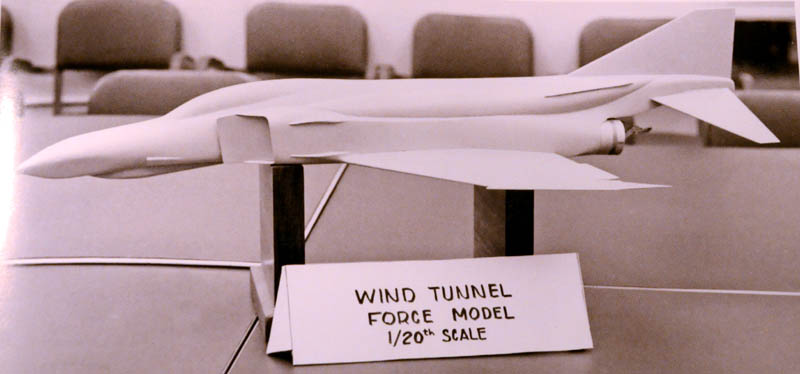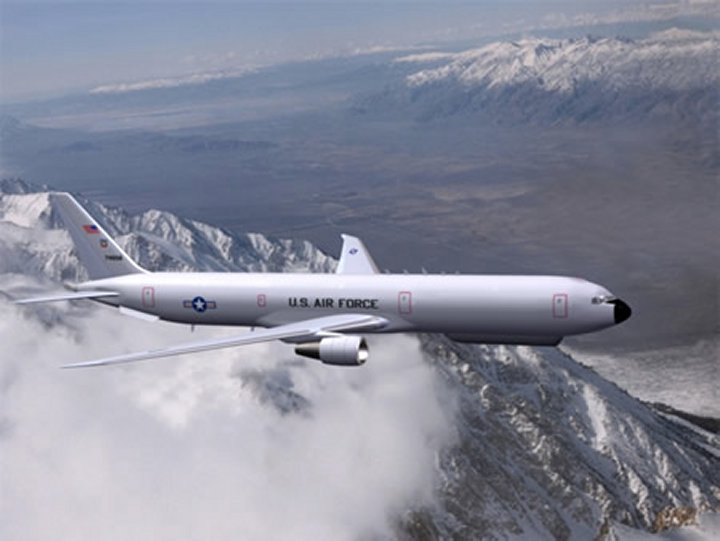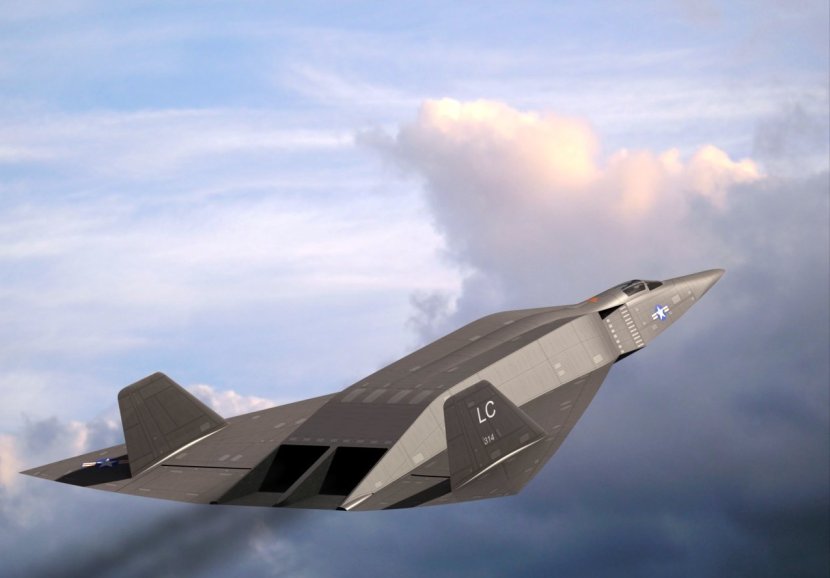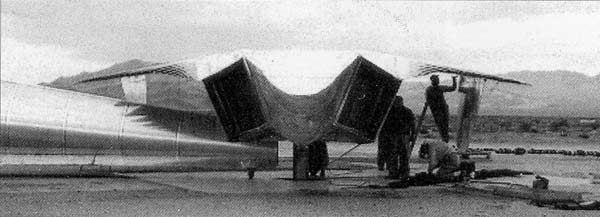CANCELLED: 10 incredible spy-planes

International law and your enemies (potential or otherwise) can’t catch you if you fly fast enough! With this in mind, spy-planes which fly over (or close to) enemy territory scooping up illicit visual and electronic information, tend to be very fast. With every air defence radar, interceptor and surface-to-air missile out to get them they evolved into the fastest, highest-flying, aircraft in the world. Here are ten, truly incredible, reconnaissance aircraft that were axed before they entered service.
10. 7RF-4X Mach 3 Hellraiser

In the 1970s, the Israeli air force wanted a reconnaissance aircraft capable of carrying the extremely impressive HIAC-1 camera. The F-4 was considered, but the G-139 pod that contained the sensor was over 22 feet long and weighed over 4000 pounds – and the Phantom did not have the power to carry such a bulky store and remain fast and agile enough to survive in hostile airspace. One solution was to increase the power of the engines with water injection, something that had been done for various successful F-4 record attempts. This combined with new inlets, a new canopy and huge bolt-on water tanks promised a mouth-watering 150% increase in power. This would have allowed a startling top speed of mach 3.2 and a cruising speed of mach 2.7. This level of performance would have made the F-4X almost impossible to shoot-down with the technology then in service.

The F-4X would also have been a formidable interceptor – something that threatened the F-15 development effort, causing the State Department to revoke an export licence for the RF-4X. Even with the increase in power, the Israeli air force was still worried about the huge amount of drag, but a solution came in the form of a slimmed-down camera installation in a specially elongated nose. This meant the interceptor radar had to be removed, which assuaged the State Department’s fears and the project was allowed to continue. However, worries from the F-15 project community returned (as did worries about how safe the F-4X would have been to fly) and the US pulled out. Israel tried to go it alone but didn’t have enough money, so the mach 3 Phantom never flew.

9. Tsybin RSR Reactivnyi Strategicheskii Razvedchik

Attacking the United States in the 1950s was daunting prospect for the Soviet Air Force. The Cold War USA, with its infinitely deep pockets, was defended by a vast integrated air defence system with a well-equipped air force. In 1954, the US deployed the world’s first operational surface-to-air missile system, the Nike Ajax. High altitude subsonic bombers had gone from the ultimate weapon to vulnerable prey.

On 4 March 1954, Pavel Tsybin (a designer working in missile development who had developed tactical assault gliders in the War) sent the Government a proposal for a manned supersonic long-range bomber capable of a speed of 3000 km/h, with 30,000 metre ceiling and a practical range of 14,000 km. Such an aircraft would be virtually invulnerable. However, it soon became apparent that the technical challenges for the ramjet-powered bomber were insurmountable. Tsybin suggested a smaller design that could also be used for reconnaissance. The solution to meeting the strategic range requirement was to air-launch the aircraft from a Tu-95 ‘Bear’ heavy bomber or from atop the abortive Bartini A-57, a vast bisonic bomber capable of sea launch (which Hush-kit will be covering in greater detail soon.)

The challenges of keeping the design small and light enough for air-launch another proved insurmountable issue. It was not possible to carry something as a heavy as a contemporary thermonuclear bomb, and so it was re-tasked to the unarmed reconnaissance role. Conventional operation from runways was the obvious solution to the illiberal weight restrictions; this ruled out ramjets propulsion, as aircraft on the ground begin their take-off run at zero airspeed (or air flow speed) and ramjets require a high air flow speed to function. The design was now to be powered by turbojets. It was intended to supercruise in excess of Mach 2 at a height of 20,000 m (65,600 ft) with a range of 3760 km (2,340 miles). In support of this project a smaller aerodymanic testbed, the NM-1, was flown in 1958. This proved largely satisfactory (unlike Britain’s comparable Bristol 188) though it lacked the required manoeuvrability to avoid surface to-air missiles. The design was refined and became the R-020. Five airframes were completed by 1961, lacking only engines. But the aircraft was not to be. In April of the same year, Premier Khrushchev cancelled the programme. It is not known exactly why it was axed but there are likely explanations: the similarly fast MiG-25 was by now in development; satellite technology was improving; Khrushchev preferred funding missile programmes.

The NM-1 in flight.
The designer of the RSR and NM-1, Pavel Vladimirovich Tsybin, died at work on February 4, 1992. An outstanding contributor to the field of aeronautical and space technology, he survived the Soviet Union by only six weeks.
* A ramjet can theoretically be started at speeds as low as 100 knots but it does not start to produce any significant thrust until around mach 0.5. Regardless, the aircraft would still have required a way to reach the minimum 100 knots.
If you love aircraft we strongly suggest you buy a copy of The Hush-Kit Book of Warplanes 
8. Boeing-Sikorsky RAH-66 Comanche

In the early 1980s the US Army had a good think about their helicopters, and how vulnerable they were to modern air defence systems. A vast and ambitious programme was started to address this concern, dubbed the Light Helicopter eXperimental (LHX).
The LHX was required to replace the UH-1 ‘Huey’ in the utility role as the LHX-U, and the AH-1 Cobra and UH-1M in the gunship role as the LHX-SCAT. The SCAT would also supersede the OH-6A and OH-58C for the ultra-dangerous scout/reconnaissance mission sets. In 1982, the US Army had a force of around 2,000 utility aircraft, 1,100 gunships and 1,400 scout helicopters — any replacement could expect enormous orders. Such large numbers meant a big budget for researching new technologies, big profits for the winning contractor and global dominance in the field of military helicopters. The study that led to the LHX noted that there was a lack of original thinking in US Army aircraft procurement and that bizarre, exotic and unconventional approaches to the problem should been encouraged.The use of advanced materials, avionics and new concepts – like stealth and a single-pilot crew – were also to be encouraged.
One way to reduce vulnerability was to make the LHX faster than existing helicopters, and a top speed of 345 mph was suggested. This is extremely fast for a conventional helicopter, even today the fastest helicopters rarely go beyond 200mph (for reasons explained here). All major US helicopter manufacturers leapt into the fray, fiercely fighting to win the golden ticket of LHX. The entrants were quite unlike anything else built before or since.
The utility requirement was dropped from LHX in 1988, and by 1991 the Sikorsky-Boeing collaboration had been selected as the winner. This aircraft, the Boeing–Sikorsky RAH-66 Comanche, first flew in 1996. The 200 mph 11,000Ib Comanche was a very sleek machine with weapons and undercarriage stowed internally to minimise drag and, more importantly, radar cross section. Three Hellfire (or six Stingers) missiles could be held in each of two weapons bay doors complemented by a trainable 20-mm GE/GIAT cannon. It was intended that the two-person helicopter could sometimes be crewed by one, but this proved dangerous in practice (the single person attack helicopter has proved unpopular- the sole operational example being the Russian Ka-50).
It was the first known helicopter designed with a high degree of low observability and was extremely sophisticated, but despite the $7 billion spent, it was not to be. It required substantial modifications to be survivable against modern air defences, dwindling orders were pushing the unit price up and the US Army thought it wiser to invest funds into upgrading existing platforms and into developing unmanned scouts that could do the job without risking a pilot’s life. Some also wondered how useful radar stealth was for an aircraft that would often be slow and low enough to be targeted optically. After a 22 year effort, the Comanche was axed in 2004.
Life after Comanche
Not all was lost, however. The LHTEC T800 turboshaft developed by Rolls-Royce and Honeywell for the Comanche has seen considerable use. It powers the Super Lynx 300, AW159 Wildcat, Sikorsky X2 (an experimental co-axial pusher), T129 ATAK gunship and even serves (as a boundary layer control compressor) on a vast flying boat – the ShinMaya US-2.
A stealthy reconnaissance and attack helicopter seemed like a good idea. Unfortunately it turned out to be wildly expensive and a mite too specialised. It was terminated after around $7 billion had been spent on it. Some technology developed for it was useful for the US secret stealth helicopter force. Its specially developed engines found employment with a variety of choppers including the Lynx Wildcat.

7. Avro 730 ‘The British Blackbird’

Bisbos.com
In 1954 the British Air Staff issued a requirement for a new reconnaissance aircraft to spy on the Soviet Union. Studies concluded that survivability would necessitate a cruise speed of mach 2.5 at an altitude of 60,000 feet. The maximum speed was to be Mach 3, around two and half times the then standing air speed world record of 755mph set by a F-100 Super Sabre the preceding year. This was a huge ask for late ’50s engine and materials technology, and that’s not even taking into account the 5,000 nautical mile range that was also demanded. To meet these targets it was to have four (later eight!) turbojet engines carried in two pods on the wings.
As well as standard reconnaissance, the 730 would act as a pathfinder for Britain’s V-force bombers, scanning the ground with the Red Drover sideways looking radar (SLAR). The aircraft was to be fitted with a Red Drover sideways looking radar as its primary reconnaissance sensor. Studies revealed the radar could be smaller than anticipated, leaving the design in the unusual position of being underweight and with space to spare. As this was the 1950s, where the solution to any military equipment question was the addition of genocidal weapons of mass destruction, it was decided to arm the 730 with a stand-off missile with a 1-megaton warhead. A high-speed bomber requirement was also being studied at the time, so it made sense to merge the projects into the new RB.156 requirement of October 1955. Avro (creators of the Lancaster and Vulcan bombers) had been entrusted with the project, known as Type 730, and the first flight was planned for 1959. Work had begun on the first fuselage when it was announced the type was cancelled, which followed Duncan Sandys’ infamous 1957 White Paper that decreed manned military aircraft to be obsolete.

Bisbos.com
6. Northrop Grumman E-10 MC2A

Most American taxpayers are blissfully unaware that they coughed up an eye-watering $1.67 billion for the E-10, before it was cancelled in 2007. It was conceptually comparable to the F-35, using high technology to be all things to all men. It was ambitiously planned as a multi-role military aircraft to replace the Boeing 707-based E-3 Sentry and E-8 Joint STARS, the Boeing 747-based E-4B, and the RC-135 Rivet Joint . This noble quest for McNamara-esque commonality has a bad history in military procurement (other ‘jacks of all trade’ included Britain’s disastrous SA80 and the US’ wrong-headed TFX programme.) The usual conclusion universal weapon projects is an expensive maintenance–heavy single-use system — with a radically different variant for another purpose — supported by superior designs optimised for single tasks.
The E-10 was based on the Boeing 767-400ER commercial airplane, a bad choice of airframe if the unfortunate Pegasus tanker project is anything to go by. The E-10 finally disappeared at the end of FY2007 as budget pressures and competing priorities pushed it completely out of the budget. Significantly, the USAF maintained funding for the MP-RTIP radar and may eventually put the radar on the E-8, or restart a project to put it on a 767.
Boeing held on to the E-10 prototype until it was sold to Bahrain in 2009 for conversion into a VIP transport. As a facetious aside, including the figure spent on
this airframe before its new life would make it the most expensive VIP transport in history, surpassing even the Airbus A380 ‘Flying Palace’!

The baby version of the MP-RTIP AESA intended for the Northrop Grumman RQ-4B Global Hawk was tested on Scaled Composites Proteus aircraft.
5. Republic XF-12 Rainbow

In many ways, the XF-12 Rainbow was the most advanced piston-engined aircraft ever built, and it was also one the most beautiful. Disobeying comedians’ rule of threes — the Rainbow ‘flew on all fours’: four engines, 400 mph cruise, 4,000 mile range, at 40,000 feet. It was the only four-engined piston-engined aircraft to achieve 450mph. Intended to serve in the high altitude reconnaissance role, this superb aircraft arrived too late: fast high altitude flight was now the domain of jets.
4. Beriev S-13 ‘U2ski’
On 1 May 1960, CIA pilot Francis Gary Powers flew a spy mission over the Soviet Union. The intruding U-2, which had taken off from Pakistan, was shot down by a local air defence system over the Urals. The well-known aftermath played out on the international stage, and several quieter stories took place behind the scenes. One of these less publicised activities was the Soviet attempt to build their own U-2s.
 Powers’ U-2 was broken apart by the missile’s impact, but the debris remained relatively intact. The retrieval of these parts inspired a frantic Soviet effort to reverse-engineer a fleet of their own U-2s. As well as allowing accurate assessment of this enemy aircraft, the homegrown ‘U-2skis’ were expected to be used for aerial reconnaissance, weather research and intercepting high altitude US spy balloons. The Beriev design bureau was given the task, and the project was designated S-13.
Powers’ U-2 was broken apart by the missile’s impact, but the debris remained relatively intact. The retrieval of these parts inspired a frantic Soviet effort to reverse-engineer a fleet of their own U-2s. As well as allowing accurate assessment of this enemy aircraft, the homegrown ‘U-2skis’ were expected to be used for aerial reconnaissance, weather research and intercepting high altitude US spy balloons. The Beriev design bureau was given the task, and the project was designated S-13.
The U-2’s engine, the Pratt & Whitney J75-P-13, was reverse engineered as the Zubets RD-16-15. By 1 April 1961 the first S-13 fuselage was completed. It appears the project was going well, but on 12 May 1962 it was cancelled. Analysis revealed that modern air defence systems could make mincemeat of slow high-altitude aircraft, and the aircraft would be too vulnerable. Aerial intelligence was better provided by spy satellites, complemented by high-speed reconnaissance aircraft, such as the MiG-25 then in development. Although no S-13 aircraft flew, the programme gave insights in materials and manufacturing methods that were then used new Soviet aircraft designs. The technology from fallen reconnaissance aircraft is still harvested in the modern age, notably in the case of Iran and the RQ-170.
3. Project Isinglass

Project Islinglass was a CIA study started in 1966 inspired by a proposal from McDonnell Douglas for an invulnerable spaceplane. The manned aircraft (an unmanned variant was also proposed) would be dropped from beneath the wing of a B-52 mothership, light its rocket engine and climb to near orbital speed. It would then fly over the Soviet Union at such a high speed and altitude it would be impossible to shoot-down. Indeed, detailed simulations showed the inability of the latest, and even notionally superior SAMs , to stop Isinglass. Even equipping the SAMs with nuclear warheads wouldn’t help them to kill it.

According to documents only declassified in 2004, the aim of Isinglass was:” To establish the feasibility and initiate development of a high performance rocket engine, hypersonic boost glide vehicle’ and camera system capable of providing quick reaction wide swathe high quality photography of highly defended denied areas. This system will perform at speeds in excess of Mach 20.0 and at altitudes over 200,000 feet’ and to “To flight test three aircraft and produce eight operational aircraft and camera systems for deployment in FY 1971”
There were three things counting against the invincible Isinglass; there was no official CIA or NRO requirement for such a machine; the price would have been astronomical, for only eight aircraft it was expected to be $2.6 billion USD (inflation adjusted US$ 20.67 billion in 2019); its trajectory could well have made it looked like an intercontinental ballistic missile and triggered World War III.

2 Antonov An-71 Madcap

Photos: Joe Coles
Inspired by the success of the Israeli Air Force’s E-2 Hawkeye in the 1982 campaign in Lebanon, the Soviet Union went about creating its own tactical airborne early warning and control aircraft – the Antonov An-71.
An operational requirement was formulated in 1982, with the aim of creating a land-based AEW&C aircraft at least as capable as the E-2C. The aircraft was required to have an endurance of at least 4.5 hours and the ability to detect low-flying aircraft and other low-observable aerial targets – and track 120 of them at a time.

After considering the An-12 and An-32 as platforms for the new surveillance aircraft, Antonov opted for the short take-off and landing (STOL) An-72 Coaler. While the ‘saucer’ rotodome was conventional, its position on top of the tail was radical. The tail fin itself was swept forward to compensate for centre-of-gravity changes; the T-tail was replaced by a low-set horizontal tail. To ensure there was enough power despite the weight of all the internal systems, an additional small turbojet was buried in the rear fuselage. Those onboard systems were to be operated by a mission crew of three, in addition to two pilots and a flight engineer.

Briefly, consideration was given to developing a carrier-based version of the Madcap, but there was no way to successfully fold the wing for hangar stowage and the thrust-to-weight ratio was inadequate for a ‘ski jump’ take-off. Instead, the Soviet Navy opted for the more conventional Yakovlev Yak-44 project, which, in the event, never progressed beyond a mock-up.

Deck trials of the Yak-44 mock-up.
Work on the land-based An-71 continued and a first flight followed in July 1985. Another prototype was completed before the programme was axed, the victim of the demise of the Soviet Union.

It’s hard to say whether the An-71 could ever have been a success, but flight trials demonstrated generally good flight characteristics and avionics performance – the radar was shown capable of detecting 400 targets over land of water within a range of 230 miles and simultaneously tracking up to 120 of them. With its rough-field performance, the Madcap might have been a very useful force-multiplier for Soviet tactical aviation operating over Europe’s Central Front in a late 1980s Cold War scenario.
— Thomas Newdick, Editor of Air Forces Monthly
1. Convair Kingfish

Picture: SNAFU
An air of mystery surrounds the Convair Kingfish, a proposed replacement for the U-2. The U-2 had been getting tracked by Soviet air defences as soon as it became operational in 1956, and its shelf-life was reduced from two years to six months. The CIA, its main customer, tasked Convair and Lockheed to come up with a spy plane that flew higher, faster and, crucially, with the lowest possible radar cross section (RCS).

Convair already had the putative B-58 which carried a large external pod for a nuclear weapon. In 1957, the B-58B Super Hustler was proposed, carrying an additional ‘parasite’ aircraft instead of the pod. This would be hauled to at least 35,000 ft where its three ramjet engines could be started, jettisoning its rear portion as it launched from the mother plane. Small, very fast, and high-flying, it was a logical candidate for a reconnaissance platform. For the CIA project, the concept was reduced to a single aircraft, code-named FISH or First Invisible Super Hustler (best Blaxploitation movie never made?). It could reach a speed of Mach 4 at 75,000 ft, climbing to 90,000 ft as it burned off fuel. In order to handle the heat generated, the leading edges of the nose and wings were built of a new “pyroceram” ceramic material.

This proposal was rejected, as the concept relied on unproven ramjet engines and required launching from a mother plane that did not yet exist. The Kingfish was Convair’s next attempt, keeping the stainless-steel honeycomb skin and the use of pyro-ceram material, with engine inlets made of fiberglass. It was sleek, with the classic Convair delta wing design and a pair of J58 engines mounted within the fuselage. Even the intakes and exhausts were arranged to reduce RCS.

But, in August 1959, Convair got the thumbs-down again, and Lockheed’s A-12 went into production. The Kingfish incorporated too many untried technologies, and concerns remained that Convair had sacrificed performance for RCS. Plus, Convair had a history of cost overruns, while Lockheed had shown it could be on time, under budget and, thanks to its secure Skunk Works facility, top secret. The Kingfish never saw light of day but, with a shape you can trace to the F-117 twenty years later, in many ways it was the birth of stealth.
— Oliver Harris, author of A Shadow Intelligence –
Special thanks to Oliver Harris & Thomas Newdick

SAVE THIS SITE!
If you wish to see more articles like this in the future please donate here. We are extremely grateful to all those who choose to donate. Hushkit.net depends on donations to carry on. The more you donate, the more you will get.


Francis Gary Powers in an interview in the 70s said that he was shown the wreckage and it was clear that the metal was blown OUTWARDS. This means the CIA bombed their own plane to scuttle the Eisenhower-Kruschev Paris summit. That happened, and detente was delayed 15 years. Powers died a week later in LA when his traffic helicopter fuel gauge reportedly showed full tanks when they were not.